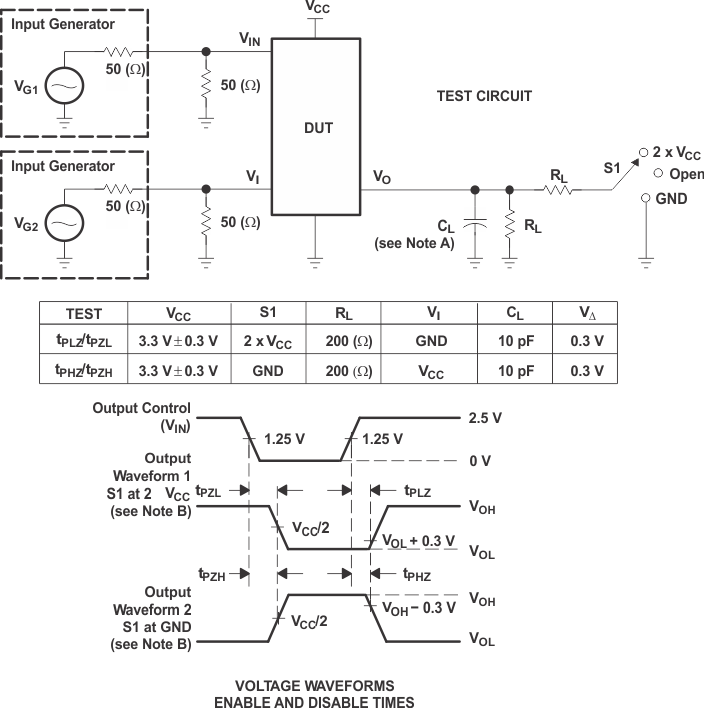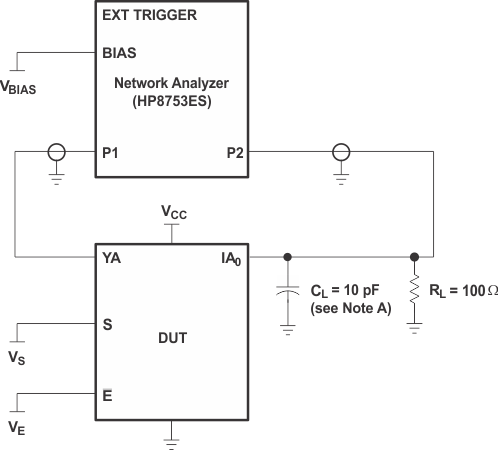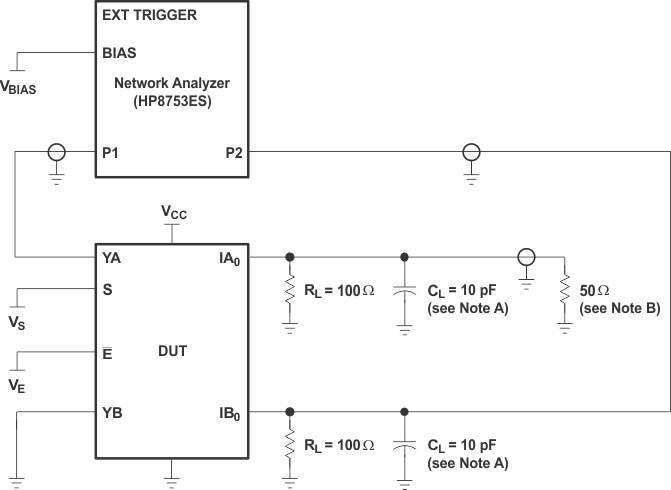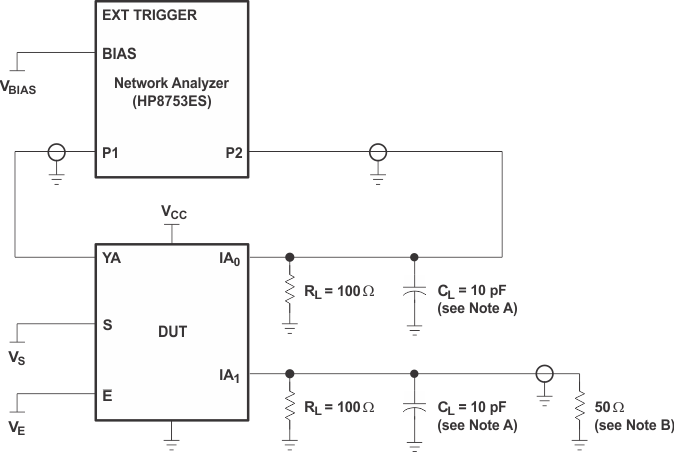SCDS176B SEPTEMBER 2004 – October 2019 TS3L110
PRODUCTION DATA.
- 1 Features
- 2 Applications
- 3 Description
- 4 Revision History
- 5 Pin Configuration and Functions
- 6 Specifications
- 7 Parameter Measurement Information
- 8 Detailed Description
- 9 Application and Implementation
- 10Power Supply Recommendations
- 11Layout
- 12Device and Documentation Support
- 13Mechanical, Packaging, and Orderable Information
Package Options
Refer to the PDF data sheet for device specific package drawings
Mechanical Data (Package|Pins)
- PW|16
- DBQ|16
- RGY|16
- D|16
- DGV|16
Thermal pad, mechanical data (Package|Pins)
- RGY|16
Orderable Information
7 Parameter Measurement Information



Frequency response is measured at the output of the ON channel. For example, when VS = 0, VE = 0, and YA is the input, the output is measured at IA0. All unused analog I/O ports are left open.
HP8753ES Setup
- Average = 4
- RBW = 3 kHz
- VBIAS = 0.35 V
- ST = 2 s
- P1 = 0 dBM

Crosstalk is measured at the output of the nonadjacent ON channel. For example, when VS = 0, VE = 0, and YA is the input, the output is measured at IB0. All unused analog input (Y) ports are connected to GND, and output (I) ports are connected to GND through 50-Ω pulldown resistors.
HP8753ES Setup
- Average = 4
- RBW = 3 kHz
- VBIAS = 0.35 V
- ST = 2 s
- P1 = 0 dBM

OFF isolation is measured at the output of the OFF channel. For example, when VS = VCC, VE = 0, and YA is the input, the output is measured at IA0. All unused analog input (Y) ports are left open, and output (I) ports are connected to GND through 50-Ω pulldown resistors.
HP8753FS Setup
- Average = 4
- RBW = 3 kHz
- VBIAS = 0.35 V
- ST = 2 s
- P1 = 0 dBM